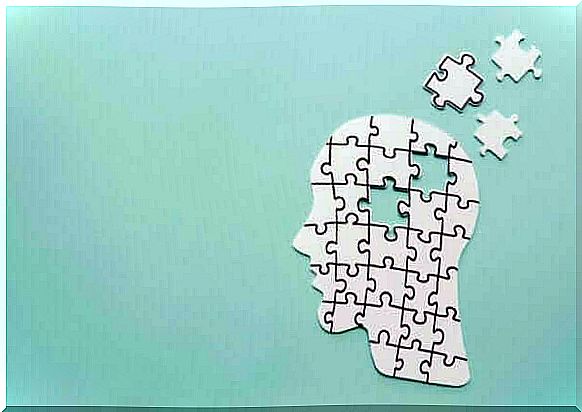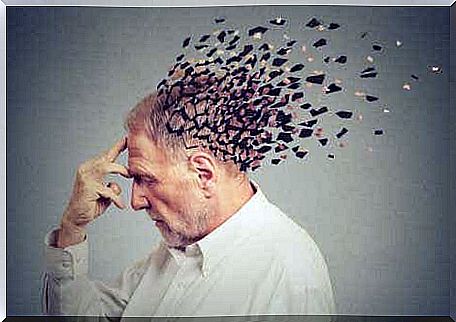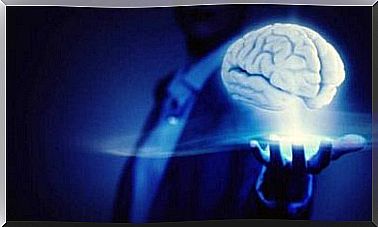9 Differences Between Alzheimer’s And Frontotemporal Dementia

The term “dementia” can be vague and confusing. This is because there are different types of dementia, each with its own unique characteristics. Today we will compare Alzheimer’s disease with frontotemporal dementia, also referred to as frontal lobe dementia.
We will discuss nine specific differences: the patient’s age at the onset of the disease, affected cognitive functions, personality changes, localization of brain damage, etc. In other words, we will focus on patient symptoms and also touch on some other factors.
Differences between Alzheimer’s and frontotemporal dementia
According to Ramos et al. (2008), the differences between these two types of dementia are as follows:

Age at onset of disease
The first difference is the average age at which people begin to show signs of these conditions. Alzheimer’s tends to affect people over the age of 65, and the risk increases with age. Frontotemporal dementia, on the other hand, usually starts much earlier, between the ages of 40 and 70.
Unlike Alzheimer’s, the prevalence of frontotemporal dementia does not increase with age.
Type and location of brain damage
With Alzheimer’s disease, brain damage appears inside the temporal lobes, especially in the hippocampus. From there, they spread to the rest of the temporal, ice and forehead patches. As the name frontotemporal dementia suggests, the damage here will occur in the frontal lobe ( Lobus frontalis ) and the temporal lobe ( Lobus temporalis ).
Alzheimer’s involves the loss of neurons and synapses. In the brains of Alzheimer’s patients, researchers have also identified the presence of tau proteins (high-resolution protein isoforms) and amyloid proteins (senile plaques).
Patients with frontotemporal dementia also experience loss of neurons and synapses and an increase in the tau protein. However, some elements are not part of Alzheimer’s disease, namely Pick cells and sometimes Pick bodies. Finally, the amyloid proteins and senile plaques, which are typical of Alzheimer’s disease, are absent in frontotemporal dementia.
Symptoms
Another difference between Alzheimer’s and frontotemporal dementia is the symptoms they cause. We start with the most common symptoms of Alzheimer’s:
- Alzheimer’s onset usually involves memory loss and inability to learn new information.
- Patients are beginning to become disoriented about time and place.
- They often have language problems.
- Personality changes are common, as well as behavioral disorders.
- Some patients have auditory hallucinations or delirious thoughts.
The symptoms of frontotemporal dementia differ somewhat from the typical Alzheimer’s symptoms. The most common are:
- In the beginning, this type of dementia does not affect the patient’s memory.
- Personality disorders, as with Alzheimer’s.
- Abnormal behavior.
- The patient may appear apathetic or hyperactive, as well as perform repetitive activities.
- Loss of affection and love for others.
- Emotional decline and indifference to things and people around them.
- Patients with frontotemporal dementia often have language problems similar to those with Alzheimer’s.
Early symptoms
With Alzheimer’s disease, the first symptoms are memory problems and disorientation. With frontotemporal dementia, on the other hand, the first symptoms are personality changes and uninhibited behavior.
Insight
Insight is a cognitive phenomenon that clinical therapists use to describe the patient’s ability to understand what is happening to them. According to Segui (2015), therapists can use insight to perform various interventions.
Alzheimer’s patients tend to have insight at first, but it becomes bad or defective as the condition worsens. However, people with frontotemporal dementia usually lose insight completely.
Memory
People with Alzheimer’s suffer from a type of memory loss that does not improve with clues or hints. Researchers have also observed that Alzheimer’s affects memory from the very beginning, as soon as a patient begins to have symptoms.
Frontotemporal dementia, on the other hand, does not affect memory to the same degree. Patients usually have some problems with this cognitive function, but hints or clues help to remember.
Visual-spatial function
Alzheimer’s disease has a significant impact on cognitive abilities, especially visual-spatial function, which is what allows you to mentally represent, analyze and manipulate objects. Patients with frontotemporal dementia usually have no visual-spatial problems.

Language and motor function
Another difference between these two diseases is language. Alzheimer’s patients suffer from anomie, periphrase and aphasia. Patients with frontotemporal dementia, on the other hand, experience stereotypical language, echolalia and mutism. As you can see, these two diseases are markedly different in this area.
Both diseases affect motor function. Alzheimer’s patients suffer from apraxia (inability to perform will-controlled and targeted motor tasks), while patients with frontotemporal dementia retain this function.
Neurological signs
Finally, when it comes to the neurological elements of the disease, Alzheimer’s disease involves myoclonus (muscle spasms). Frontotemporal dementia, on the other hand, can cause urinary incontinence and involuntary reflexes. These are primitive reflexes that newborns have, but which disappear with age and sometimes return with dementia.
Although these are the most obvious differences between Alzheimer’s and frontotemporal dementia, there may be several. We have chosen to share these with you because they are the most relevant when it comes to making a correct diagnosis.
As you can see, these two diseases are quite different, although they have some things in common (such as personality changes, language changes and cognitive function changes).









